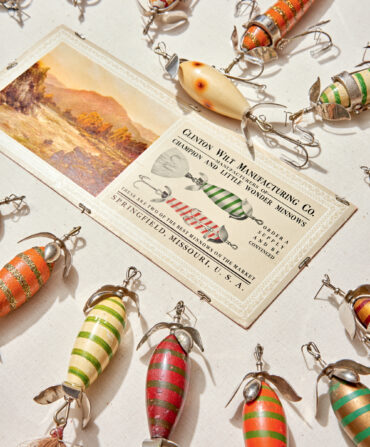Over the course of a Chesapeake Bay waterman’s life, big memories tend to swallow smaller ones. So when seventy-two-year-old Harold “Stoney” Whitelock looks back on his childhood now, it’s all misty images of water and boats, and little else. “That’s all my family talked about at Sunday dinner,” he says. “Boat this and boat that.”
Whitelock is one of the bay’s last skipjack captains. Long, shallow wooden boats with tall, wide sails, skipjacks survive as the only commercial sailing vessels left in North America. The nine or so (by Whitelock’s estimate) still used to dredge for oysters all concentrate here on Maryland’s toothy Eastern Shore, kept afloat by a couple of dozen people who speak with a distinctive brogue that’s fading by the generation, too.
Whitelock, who docks on Deal Island, owns one working boat, the Minnie V, and he’s restoring another, the Anna McGarvey. From October 1 through the end of March each year, he bounces back and forth between the two, depending on how many crew members show up to go oystering. “I feel like I’m contributing to making a living for about a half dozen men in the wintertime,” he says. “I’m just trying to keep these old boxes afloat as long as I can.”

Up to a thousand of those boxes whipped around the bay in the late 1800s, back when oyster harvests for the country’s largest estuary peaked at about twenty million bushels. As much as any other living creature, though, oysters need an abundance of ancestors to survive. Each spring when the water hits around sixty-eight degrees, males shoot sperm and females shoot eggs. They meet at the surface and produce larvae that will then dive down in search of a hard spot to stick to, preferably the shell of another oyster. But the more oysters dredged, the fewer places to land. By the end of the twentieth century, the annual harvest had shrunk down to about two hundred thousand bushels.
It’s sort of like that with skipjack captains. Most of those who remain are here because their parents worked the water, and their grandparents, too. Wade Murphy III, for instance, who is forty-seven, started working with his father at eighteen out of Tilghman Island. And his dad did the same with his own father.
Maryland now has fairly strict regulations on wild oyster harvests: Two days a week, captains—who must be Maryland residents—can use a small motorized push boat to propel skipjacks and get them to the oyster beds faster; on two other days, they can use nothing but the wind. Most captains only go out on motorized days anymore.

Not Wade III. He says he was the only skipjack on the bay to sail for oysters regularly two seasons ago. “It’s not very efficient,” he says, “but I would rather sail if I could. When you sail, you feel like you’re part of the boat.”
His father, Wade Jr., who is now seventy-eight and a little hard of hearing, runs the fifty-foot-long Rebecca T. Ruark, the oldest of the skipjacks. The boat still has giddyap—it finished second in last September’s sixtieth annual Deal Island Skipjack Race, one of at least two yearly races designed to put skipjacks in front of audiences (and one at which Wade Jr. reigns supreme as the winningest captain, with eleven victories). He’s grown weary of dealing with inconsistent crews and regulations, though, so now he mostly captains tours on the Ruark, keeping the tradition alive by introducing it to others.
“Like any of us,” Wade III says of his father, “he’d rather be on that boat than anywhere.”








